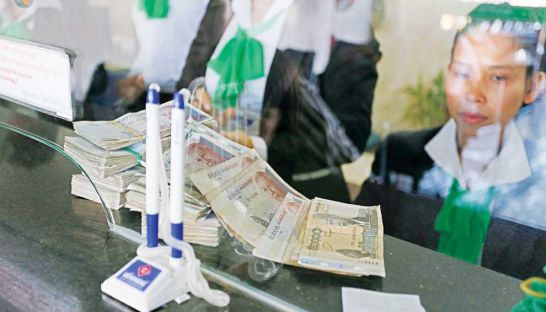MFI lending continues on course
MFI lending continues on course
Cambodia's microfinance sector continued to expand rapidly during the first half of the year, despite concerns over rising default rates as the industry’s main borrowers – provincial farmers – struggle to repay their loans after successive seasons of drought and poor harvests.

A report by the Cambodia Microfinance Association obtained by the Post yesterday revealed its members – 47 microfinance institutions (MFIs) plus seven NGOs – posted outstanding loan values at $3.26 billion during the first six months of 2016, an increase of 34 per cent compared to the same period a year earlier. Meanwhile, total non-performing loans (NPL) increased to $43 million, marking a sector-wide increase to 1.3 per cent of the loan portfolio compared to 0.6 per cent a year ago.
Operators in the industry expressed concern over the NPL rate and said the sector needs to be more careful with lending while strengthening loan quality.
Bun Mony, CEO of Sathapana Bank, a former MFI that recently upgraded to a commercial banking licence but still records its loan portfolio with the CMA, said clients in the agricultural sector were having difficulties repaying their loans, and this had a knock-on effect on overall loan performance.
“When the agricultural sector is affected it affects all sectors as well,” he said, adding that since June, Sathapana had scaled back its lending despite peak demand ahead of the planting season.
“We still want to expand our lending, but we just need to be more careful in strengthening the quality of the loans,” Mony said.
At the end of June, Sathapana’s outstanding loan portfolio reached $559 million, standing second only to Prasac, which registered $863 million. Amret Microfinance and Hattha Kaksekar Limited reported outstanding loans at $493 million and $394 million, respectively.
CMA chairman Hout Ieng Tong could not be reached for comment yesterday, but in July said that lenders need to be concerned when the ratio of loans where payments are more than 30 days overdue exceeds 1 per cent.
In Channy, president and CEO of Acleda Bank, whose microlending activities are excluded from the CMA figures, said the bank had $2.54 billion in outstanding MFI loans and commercial lending, with an NPL ratio of 0.7 per cent.
He said MFIs whose NPL ratio had exceeded 1 per cent during the first half of 2016 would likely reign in lending for the rest of the year.
“I think they will improve the quality of loans, and the growth rate in second half will be lower,” he said. “It will be growth that is safer with more quality, and less risky.”
David Van, managing director for Cambodia of Bower Group Asia, said the expansion of MFI lending in rural areas carries a growing inherent risk due to the fact that clients have yet to see better working conditions through lending.
He added that currently large numbers of rural residents are migrating to other countries for work to compensate for poor agricultural performance at home, and that the majority of their remittances are used to pay off existing debts.
“More than a million people migrate to Thailand, Korea or other countries to earn money to pay for their loans,” he said. “When the agricultural sector is not good, farmers are placed in a risky position that can cause them to fall deeper into debt.”
In addition to the rapid lending growth, CMA figures also show strong growth in deposits among its eight microfinance deposit-taking institutions. Total deposits increased to $1.75 billion as of end-June, compared to $1.12 billion a year earlier.













